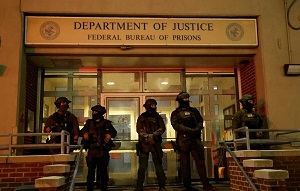IATA Director General's Report on the Air Transport Industry, AGM 2022, Doha - By Willie Walsh, The Jordan Times
People who longed for the freedom to fly are taking to the skies again — and in growing numbers. By next year, most markets should see traffic reach or exceed pre-pandemic levels.
Air cargo stood out as a lifeline for vaccines, supply chains, and airline revenues throughout the COVID-19 crisis. And it has grown to be an even more vital contributor to revenues.
COVID-19 was catastrophic. It robbed our world of millions of people—family, friends, and colleagues. And the response of governments dismantled connectivity, destroyed jobs and inflicted misery on people, actions justified by politicians around the world that “their decisions were driven by the science.”
George Bernard Shaw once observed that “science never solves a problem without creating 10 more.” How true that is.
But we survived, defying predictions of bankruptcies and failures. It certainly helped that prior to the crisis, the industry’s financial foundations were at their strongest point ever, owing to your leadership.
It was a team effort that saw us through. Airlines took prudent and difficult decisions to stay afloat as revenue evaporated. For our people it was a story of wage cuts, layoffs, reassignments, or retrenchments but let’s not forget that these actions saved hundreds of thousands of jobs. Our shareholders and financiers provided much needed loans and investment. And some governments had the foresight to financially bridge many airlines through the crisis.
Our industry is now leaner, tougher, and nimbler. Our latest analysis shows losses in 2021 close to $42 billion, a huge loss, but down from our earlier estimate of $52 billion. And we now believe that global losses will be cut further, to $9.7 billion this year. Industry-wide profit should be on the horizon in 2023.
Yes, we are resilient, and we are rebounding.
But while the outlook is positive, the business environment is challenging.
The inflation rate topped 9.0 per cent in the OECD in April, and our outlook expects GDP to grow 3.4 per cent this year. Not bad but down on earlier forecasts.
The World Bank expects energy prices to soar 50 per cent compared with 2021.
Russia’s illegal invasion of Ukraine has destabilised globalisation, threatened the world’s food supply, and recreated a geopolitical divide not seen since the Cold War, and fixing battered balance sheets carrying debts of $650 billion will be a monumental challenge.
There is no way to sugar coat the bitter economic and political realities we face. But the desire to travel and the necessity of moving goods are both solid.
Recent history supports optimism for aviation in challenging times.
During the global financial crisis, travel patterns changed, but passenger numbers held steady, with a quick return to growth from 2010. And the decade that ensued delivered aviation’s strongest financial performance ever.
History repeats itself. We already see strong demand that will grow in the months and years ahead.
To support our future success, I will highlight just four of the challenges for our collective attention:
We, and I mean everyone, must learn the lessons of COVID-19, as we need to be clear with governments on what is needed from regulation.
We must deliver on our net zero emissions commitment, and it has never been more important for us to improve gender diversity
COVID-19
COVID-19 will not be the last global pandemic. We all hope for a very long gap before the next one. But it is vital that we learn from the mistakes made in how aviation was shut down and how it is being reopened.
When COVID-19 hit, governments closed borders and stopped people from flying. They did not consult with the industry. They did not follow the advice of WHO. Yes, decisions were based on science, but it was political science, not medical or data science.
COVID-19 still spread around the world.
Analysis by Oxera and Edge Health concluded that, at best, border closures may have delayed infection peaks by just a few days.
There was one virus, but each government invented its own methodology to control what travel remained possible. This is documented by Timatic. At the peak of the crisis, it was registering hundreds of changes daily to entry restrictions. How can anybody have confidence in such a shambolic, uncoordinated, and knee-jerk response by governments?
The cost of government mismanagement was substantial. It devastated economies, disrupted supply chains, and destroyed jobs. The restrictions even hurt people’s health. Our research shows that two thirds of people felt their quality of life deteriorated because of the impacts of travel restrictions. And this is confirmed by WHO data showing a 25 per cent rise in mental health issues.
So, the first lesson is the wisdom of what WHO said from the beginning. Closing borders is not the right response to a pandemic.
As governments eased COVID-19 restrictions, different problems emerged: Delays and disruptions.
Disruptions happen even at the best of times. But many of these could have been avoided.
Governments had no plan and worked in isolation. They made things up day-by-day, and in some cases did complete U-turns—the worst being the panicked over-reaction to Omicron. This unpredictability made the restart much more difficult.
It’s no wonder there are operational challenges for some airlines and at some airports today.
The immediate priority is working together with governments and airports to address capacity issues where they are occurring. Let’s be clear, these problems don’t exist everywhere, and solutions are already emerging.
The longer-term priority is ensuring that governments work much more closely with airlines in the next crisis—whatever that may be.
Regulation
Let’s move to regulation. It is not the most glamorous topic, but there are good reasons for us to be concerned about recent developments.
As the regulatory focus shifts to non-pandemic issues, politicians are filling agendas with a plethora of initiatives. Not all will be helpful.
Three areas are of particular concern: Slots, accessibility, and consumer rights.
On slots, we all saw how valuable flexibility in the global system was during the crisis. It preserved networks when government decisions made demand disappear. We still need that flexibility because the world is still far from normal. But even more critically, we cannot let governments forget the importance of a global standard approach for slots.
The reminder is timely because the UK and the EU plan to review slot rules this year. Is there anybody in this room who believes they will reach the same conclusion? Different outcomes will put the predictability of the global system at risk. Brazil offers a good example. It strengthened its regulation by working within the framework of the Worldwide Airport Slot Guidelines. It’s the way all governments need to work.
On accessibility, countries are aligning policies, including on transport, with the Convention on the Rights of Persons with Disabilities. Brazil, Canada, Colombia, Egypt, the EU, the UK and the US are particularly active. Yes, we need to improve, but travelers with disabilities would see no benefit if the 185 signatories created 185 different solutions.
On consumer rights, at least 30 countries are looking at their regulations. Much of this activity is spurred by the extraordinary experiences when governments shut down connectivity at the beginning of the pandemic. In other words, they now want to regulate US for the chaos THEY created. Keeping in mind that EU regulation 261 on consumer rights already costs the industry $10 billion annually, much of it from disruptions forced upon us by other providers such as air traffic control. The stakes are high.
We don’t oppose regulation, but it must create solutions, not add to problems. Unfortunately, that is rarely the case. When it comes to politicians and regulation let me paraphrase another great Irish writer, Brendan Behan, “I’ve never seen a situation so dismal that a politician couldn’t make it worse”.
And now I turn to the glamorous part of regulation: Infrastructure charges.
In October, I reported on the egregious attempts by infrastructure providers to raise charges. The nightmare is becoming reality. Heathrow was allowed to increase charges 50 per cent and is asking for more. Schiphol confirmed a 37 per cent hike for 2022-24. Not to be outdone, Dublin joined the group, wanting an 80 per cent hike over 2023-2026.
The prize for the cheekiest behaviour, goes to the government of the Bahamas. In 2021, Bahamas regained control of its airspace from the US and contracted the US FAA to continue providing overflight services free-of-charge. The government of the Bahamas then promptly started collecting overflight fees from airlines at double the previous rate! You could not make this stuff up if you tried.
These are just the vanguard. Focusing on airports, out of the top 100, more than half announced increases for 2022 and 2023—expecting their customers to make up for revenues they did not get during the pandemic. Try that in a competitive business. “Dear Valued Customer, we are charging you double for your coffee today because you could not buy one yesterday.” Who would accept that?
This behaviour is why we oppose “light touch” regulation proposals by airports. And we categorically reject their characterisation of aeronautical revenue as insignificant. In fact, Airports Council International reports that aeronautical revenues for airports were $99 billion in 2019.
Too many airports are addicted to a “spend big and cream it off the customer” mentality. And airport opposition to strong independent economic regulation demonstrates that they know it’s wrong.
A rare regulatory success story is Spain. The government rejected AENA’s unjustified request to recover $2.4 billion of pandemic losses. We need other governments to show similar backbone.
Sustainability
Now I turn to sustainability. At our last AGM we took the monumental decision to achieve net zero emissions by 2050. Now we must turn our commitment into carbon reductions.
Predicting what technologies will be available in 2050 is an imprecise science. But we currently expect 100 per cent carbon abatement with: Sixty-five per cent through SAF, 19 per cent through offsets and eventually through carbon capture, 13 per cent from hydrogen and electric propulsion that Airbus, Boeing, and other manufacturers are committed to delivering by 2035, and 3 per cent should come from more efficient operations.
Talking about operational efficiencies, governments also need to do their part. The EU spearheaded the charge on sustainability. But the near complete failure of its member states to implement the Single European Sky (SES) exposes government greenwashing. SES could eliminate up to 10 per cent of Europe’s air transport emissions with technology that exists today. It’s beyond embarrassing, it is a scandal for Europe that it has failed to deliver.
And insult is being added to injury with European environment taxes reaching $5 billion annually—also greenwashing. These taxes have not delivered SES, produced a drop of SAF or reduced emissions in any way. Taxes won’t stop flights, they just price flying out of the reach of some people and make aviation LESS efficient.
In contrast, airlines have committed $17 billion in forward purchase SAF agreements. And, irrespective of price, airlines have used every drop of SAF that was available in 2021. And it will be the same for this year. We’d buy more if we could.
Fortunately, airline demand has stimulated an exponential increase in SAF production. By 2025 there could be 5 billion liters of SAF produced annually — 40 times what was available last year.
The momentum is undeniable, but there is still work to be done. And government policy will play a big role.
Governments don’t need to micromanage how airlines purchase SAF. They need to incentivise production. The successful use of production incentives to transition to solar or wind for electricity production proves the point. The cost of the clean solutions dropped below the cost of using fossil fuels. Clean electricity is now cheap and widely available.
With a similar approach, we could see 30 billion litres of SAF by 2030. That will still be far from where we need to be. But it would be a clear tipping point towards our net zero ambition of ample SAF quantities at affordable prices.
Offsets are a smaller part of our ambition and bring their own unique challenges.
Longer term, as we move from stabilising emissions to a net zero focus, our offset providers must transition to a viable market that includes affordable and scalable nature-based solutions and carbon removals.
The immediate use of offsets is with CORSIA—the landmark international agreement reached through ICAO to stabilise aviation’s international emissions from 2020.
CORSIA is in danger.
Governments are split on the baseline. It was meant to be the average of international emissions for 2019 and 2020. When CORSIA was agreed in 2016 nobody could have imagined that governments would stop airlines from flying for much of 2020. After agreeing to remedy this by using only 2019—the industry’s position—several governments, now want to penalize us for NOT flying and have proposed to revert to the 2019-2020 average, irrespective of inequities.
On top of this, not all governments respect CORSIA as the single economic measure for international aviation that it was meant to be. The most worrying is the EU. Its parliament voted to apply its ETS on top of CORSIA, forgetting that the world unanimously rejected this extra-territorial ambition in 2012.
Where do we go from here?
First, we need a successful, fair and, effective CORSIA. Our proposal is to maintain a 2019 baseline. If states want to be more ambitious, and they should, incentivising SAF is the way to go.
Second, to enable a comprehensive approach to sustainability, governments must commit to the big picture. Our net zero by 2050 goal is firm, and we will be accountable. Governments have no similar commitment. To enable net zero by 2050 with an effective policy framework it is essential that this year’s ICAO Assembly commit to a Long Term Aspirational Goal of similar ambition to the industry.
This approach is in the DNA of aviation. It is how we tackled noise and improved safety. Achieving net zero by 2050 is as critical. Failure to agree on a Long Term Aspirational Goal, or a polite agreement that kicks the can down the road, would be unacceptable outcomes.
Gender Diversity
The last area that I will address is gender diversity. A photograph of this room would demonstrate the challenge. Half the world’s population is female, but you would never know it from this male-dominated room.
Addressing the gender imbalance is the right thing to do. The gender imbalance is short-changing our industry on talent. And it is not sustainable. How can we solve the skill shortages that we are all facing without equally engaging both halves of the population?
In 2019 we launched the 25by2025 initiative to improve the industry’s gender balance. Since then, 111 organisations have signed-up to its commitments. Signatories commit to reach at least 25 per cent female participation in senior or non-traditional positions or to improve female representations in these roles by 25 per cent.
We should be inspired that change is happening in our industry.
In 2019, 3 per cent of IATA airline CEOs were women. Today, that is nearing 9 per cent. Recent female CEO appointments at Pegasus, El Al, KLM, Austrian, and others are part of this momentum. And an indicative sample reporting from 25by2025 signatories shows that nearly a quarter of senior roles are held by women.
More progress, of course, is needed. If you have committed to the 25by2025 initiative, thank you for your leadership. Those who have not yet committed are encouraged to join. There is a booth in the exhibition hall where the IATA team can help you join the drive for change.
Conclusion
This is a unique time for aviation. We have proven our resilience. And we are rebounding as a safe, sustainable, and diverse industry that is on its way to being profitable.
The recovery from COVID-19, however, is coincident with a tectonic shift in geopolitics. The Russian invasion and subsequent war in Ukraine have shaken the foundations of globalisation to which aviation has contributed so much, and that, in turn, enables so much of our business.
No war is good. Wars bring human suffering. And the stakes in Ukraine could not be of greater consequence. That is why, even for our apolitical business-focused association, there cannot be any ambiguity in condemning what is happening in Ukraine. I am sure that I speak for all participating in this assembly in calling for peace.
In the meantime, we continue our critical work of bringing people together.
We are builders of peace and enablers of freedom.
Willie Walsh is IATA Director General.




